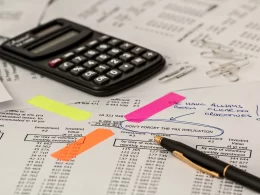In today’s post we will discuss the issue of the principle of balance sheet equilibrium. We will learn its definition and its application in everyday life. We will also look at the impact of this principle on financial markets. I invite you to read on.
Article in cooperation with the portal for men facet365.pl
What is the balance sheet equilibrium principle? Definition of the concept
The principle of balance sheet balance is a fundamental principle of accounting. The definition of the concept assumes that all assets of a company must be balanced by corresponding liabilities and equity. It is a principle that states that total assets must be equal to the sum of liabilities and equity. This principle is commonly used in accounting to help assess a company’s financial position.
This principle also means that if a company’s revenue is growing, its assets should also grow, and if a company’s revenue is declining, its assets should also decline. This principle is very important because it allows companies to understand how much money they have and what assets they are profiting from.
The principle of balance sheet balance is very important for managing finances and determining financial ratios. It helps companies assess their financial situation and draw conclusions about potential gains and losses. It also helps determine whether a company has enough assets to pay off its liabilities.
What is the balance sheet balance principle?
The balance sheet equilibrium principle is the basic premise of any financial analysis. It says that the amount of assets should be equal to the amount of liabilities. The balance sheet is a document that shows what assets and liabilities a company has at any given time. Assets are all the things it owns that are used to produce income, while liabilities are all the liabilities the company has to pay. With the balance sheet balance principle, it is easy to see if a company is able to pay its liabilities.
Using the balance sheet balance principle has many advantages. First, it avoids making incorrect entries in the accounting books. Second, it allows a company to quickly determine its actual financial condition, which is especially important in times of economic uncertainty. Third, it serves as a tool for assessing the efficiency and profitability of a company’s operations.
The principle of balance sheet balance is an integral part of financial management in any company and is extremely important for the healthy development of the company. Companies should always strive to maintain a constant ratio between assets and liabilities in order to be able to adapt to changing market conditions and obtain tangible benefits.
The principle of balance sheet balance – practical application
The balance sheet equilibrium principle is the basis for making financial analyses. It makes it possible to determine the viability of a company and its financial condition. The principle states that total assets must equal total liabilities. In other words, everything the company has must be balanced by everything the company has to pay. In practice, this means that for every asset there must be a liability of appropriate value.
The balance principle is particularly applicable when analyzing financial accounts. Performing a financial analysis using the balance sheet balance principle makes it possible to verify all financial data. For example, if a given financial report indicates that assets are $100,000 and liabilities are $90,000, this is impossible because assets and liabilities must be equal.
The balance sheet equilibrium principle is also used to determine a company’s financial result. To do this, subtract all assets from all liabilities. If the assets exceed the liabilities, it means that the company is able to make a positive financial result. Otherwise, the company will have a negative financial result.
The principle of balance sheet equilibrium is very useful in determining the financial condition of a company. It allows you to make a quick assessment of the financial condition and determine whether the company can sustain itself in the market.




